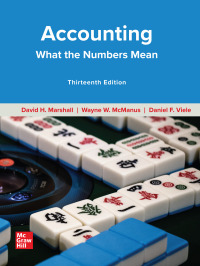Question
Facts : In Year 1, Jim Warner was a single taxpayer with no children. Jim ran his own electronics repair business (a sole proprietorship). In
Facts: In Year 1, Jim Warner was a single taxpayer with no children. Jim ran his own electronics repair business (a sole proprietorship). In Year 1, Jim spent 1,000 hours working on this business.
In Year 1, Jim obtained a real estate agent license and began working as a real estate agent at Brokerage Firm. Although Jim was licensed as a real estate agent under applicable state law, he was not a licensed as a broker. Jim worked for Brokerage under a contract stating that he was an independent contractor, not an employee of the brokerage firm. The contract required Jim to sell, exchange, lease, or rent properties and solicit additional listings, clients, and customers diligently and with his best efforts. Jim spent a total of 1,100 hours selling real estate in Year 1. Consistent with Jims independent contractor status, Brokerage issued a Form 1099 to him. Jims earnings were solely generated by commissions.
During Year 1, Jim owned two commercial real estate rental properties (Property 1 and Property 2). Jim spent approximately 80 hours managing Property 1. Property 1 had a resident who assisted Jim, and the resident spent 500 hours managing it.
Jim spent approximately 430 hours managing Property 2. He was the only person who managed this property.
In Year 1, Jims net repair income was $110,000. His net real estate agent earnings totaled $75,000. Property 1 reported a net $50,000 loss, and Property 2 reported a net $30,000 loss. In Year 1, the Jim reported $105,000 of adjusted gross income on his federal tax return ($110,000 + $75,000 - $50,000 $30,000). Aside from filing Schedule Cs for the repair and real estate agent businesses and Schedule Es for the real estate rentals, Jim did not file any other Schedules or statements regarding these activities on his Year 1 tax return.
Jim has received an audit notice from the IRS regarding his Year 1 tax return. Specifically, the IRS challenges his deduction of rental losses for both Properties in Year 1 as passive activity losses that were not deductible in Year 1 under Code section 469.
Issue: Is the IRSs challenge of the losses correct?
Please answer the following part based on the facts and issues
Conclusion:
Analysis:
Step by Step Solution
There are 3 Steps involved in it
Step: 1

Get Instant Access to Expert-Tailored Solutions
See step-by-step solutions with expert insights and AI powered tools for academic success
Step: 2

Step: 3

Ace Your Homework with AI
Get the answers you need in no time with our AI-driven, step-by-step assistance
Get Started


